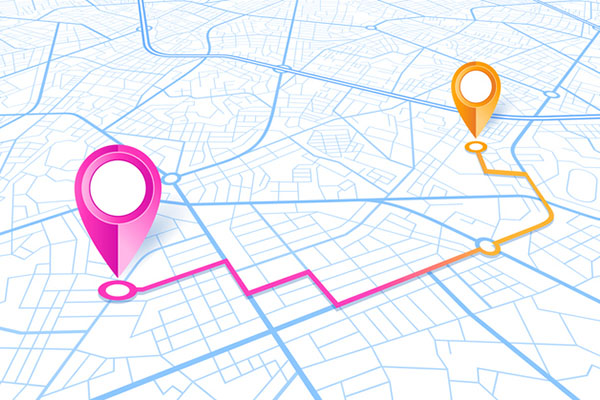Study: 90% of retail and CPG companies modifying supply chain networks
New joint research from Bain & Company and Microsoft identifies three critical changes in retail and consumer goods supply chain management in response to COVID-19 fallout

To better understand how COVID-19 is transforming the retail and consumer goods supply chain networks, Bain & Company and Microsoft joined forces to examine supply-chain related investment plans and priorities at 70 companies. The research, “It’s Time to Build Resilience into Retail and Consumer Goods Supply Chains,” revealed three critical changes in retail and consumer goods supply chain management.
The most striking is a new willingness among senior executives to make trade-offs between network cost, speed and resilience. Many who once viewed their supply chain as a cost center now see it as a strategic capability. Of the companies surveyed, 90 percent plan changes to their supply chain networks —and more than 40 percent expect to increase their total supply chain investment with the primary goal of increasing speed, agility and resilience.
“When COVID-19 paralyzed global supply chains, it also triggered a massive surge in online sales—a double shock that few retailers and consumer goods companies were prepared to handle,” said Mikey Vu, a partner in Bain & Company’s Retail practice and co-author of the report. “Our research revealed that companies with supply networks designed for maximum cost efficiency were unable to respond quickly to these sudden supply shocks and demand spikes. The prize of efficiency came at the cost of resilience.”
As a result, boards and executive teams are now taking a hard look at the lessons learned and reprioritizing their goals. The study shows the share of executives rating cost efficiency as one of their top two supply chain goals fell by 13 percentage points, while agility rose by 24 percentage points.
“We are seeing a significant shift in supply chain strategies as our customers adapt to meet the demands caused by COVID-19. While cost reduction and efficiency remain a critical priority, we are seeing supply chain agility rise to the top of the list for executives. This need for agility has prompted an overwhelming consideration for cloud-based architecture,” said Shelley Bransten, CVP Consumer Goods & Retail Industries at Microsoft.
Successful retailers and consumer goods companies have started constructing flexible networks of suppliers and manufacturing partners. That means setting up alternative suppliers, manufacturing sites and assembly nodes, and making the most of Industry 4.0 tools to optimize costs, improve visibility across the network and accelerate reaction times. As they take those steps, leadership teams are making critical tradeoffs between efficiency, convenience and responsiveness to improve resilience.
In a second key shift, retail and consumer goods leadership teams are starting to include top supply chain managers in corporate decision-making, acknowledging that supply chain data and insights are vital to their business success.
Of the companies surveyed, 47 percent expect their supply chain organizations to provide input to most or all major strategic decisions, such as merchandising, store operations and product strategy—an increase of 17 percentage points over the 12 months prior to COVID-19.
The reason is clear. Resilience requires lifting the opaque veil that shrouded yesterday’s supply chains. Leading retailers and consumer goods companies are using cloud-based supply chain applications and other tools that can share information with their networks of suppliers and partners.
Third, the research also shows these companies are focusing investments in three important areas to bolster supply chain speed and agility:
- Omnichannel fulfilment. Before the pandemic, retailers faced growing pressure to fulfill digital orders faster. According to the study, nearly 60 percent of retailers and consumer goods companies now plan to increase their investment in multiple facilities that can respond to online orders.
- Predictive planning and demand forecasting. To improve supply chain resilience, retailers and consumers goods companies need better visibility into network constraints and bottlenecks, as well as additional channels to avoid blockages. The findings show 56 percent of companies in these two sectors plan to increase investments in predictive planning and demand forecasting.
- Flexible Operations. To weather future supply and demand shocks, leading retailers and consumer goods companies are seeking to boost supply chain flexibility. Many are teaming up with partners to speed fulfilment and delivery. Bain and Microsoft found that 53 percent of retailers and consumer goods companies are planning to increase investments in flexible operations.
All three capabilities were important before COVID-19, and now have become critical to cope with an on-going surge in online sales.
While many of the companies we surveyed said they are confident about transforming their supply chains for a new era, they are also grappling with a number of obstacles that may slow progress. Forty percent of respondents admitted they did not yet have the internal solutions or external partners they need to achieve their goals. And many lack the resources to invest in resilient supply chains.
Other hurdles include merchants that object to new decision-making models and archaic, in-house data systems that make it difficult to improve supply chain visibility. Companies will also need to coach supply chain managers on bringing strategic insights to the table, and encourage leadership teams to incorporate new data sets and metrics into decision-making.

Article Topics
Latest in Materials Handling
Beckhoff USA opens new office in Austin, Texas Manhattan Associates selects TeamViewer as partner for warehouse vision picking ASME Foundation wins grant for technical workforce development The (Not So) Secret Weapons: How Key Cabinets and Asset Management Lockers Are Changing Supply Chain Operations MODEX C-Suite Interview with Harold Vanasse: The perfect blend of automation and sustainability Consultant and industry leader John M. Hill passes on at age 86 Registration open for Pack Expo International 2024 More Materials HandlingSubscribe to Materials Handling Magazine

Find out what the world's most innovative companies are doing to improve productivity in their plants and distribution centers.
Start your FREE subscription today.
April 2024 Modern Materials Handling

Latest Resources










